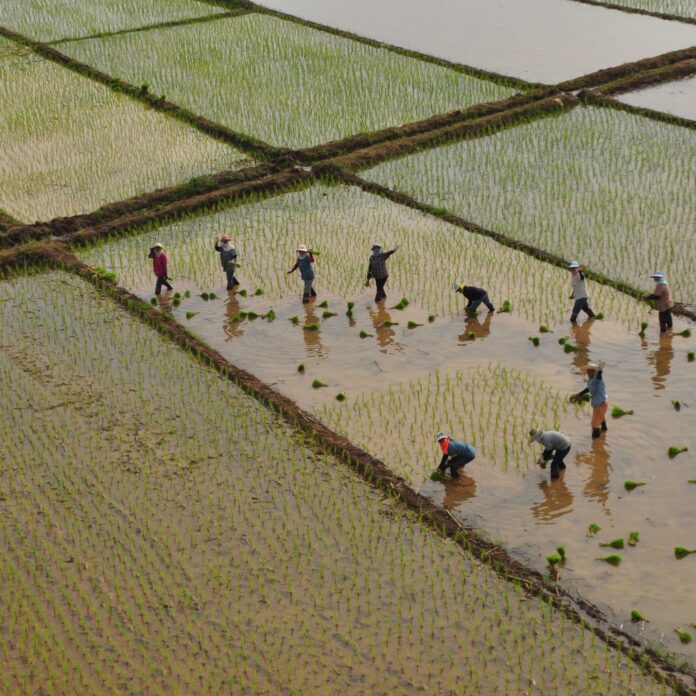Verizon, AT&T, Telefonica putting stakes into precision agriculture
With the forecasted growth in the global population, agriculture faces a very big challenge to rapidly increase food production. To achieve this goal, precision agriculture supported by Internet of Things (IoT) tools is being implemented in farming projects around the globe to improve the potential of the industry.
The implementation of IoT has the potential to change agriculture for good, making this traditional activity more efficient and predictable. Precision agriculture can help farmers deal with a number of challenges presented by agriculture such as water shortages, the limited availability of suitable lands for crop plantations, the difficulties farmers have to manage costs and the need to meet the increasing global demand for food resources.
Agriculture has traditionally been a somewhat risky economic activity and farmers around the world have been impacted by economic downturns and environmental shifts. Precision agriculture implements IoT systems and technologies in order to essentially reduce potential missteps and, in turn, maximize yields.
Precision agriculture uses IoT applications, which help farmers to increase the quality, quantity, sustainability and cost effectiveness of agricultural production. These tools allow the farmers to know what seeds to plant, the amount of fertilizer they need to use, the better time to harvest as well as the expected crop outputs. Through the implementation of IoT, farmers can also monitor sensors that can be used to detect soil moisture, crop growth and livestock feed levels, among other key functions. The sensors can also remotely manage and control connected harvesters and irrigation equipment.
Certain IoT platforms used in the agriculture industry allow farmers to manage the big amounts of data collected from sensors, cloud services such as weather or maps, connected equipment and existing systems. The platforms also leverage big data and analytics tools to provide insight and recommendations to improve the decision-making process.
GPS devices and sensors on the field and in farming equipment such as tractors generate real-time data that is stored in cloud-based systems so it can be easily accessed by farmers via charts and reports to improve crop yields and water utilization, among other benefits.
A report by Beecham Research highlighted that the agriculture industry needs to adopt IoT tools in order to meet the expected food demand by the increasing population globally. “In order to counter these challenges, the United Nations Food and Agricultural Organization (FAO) recommends that all farming sectors should be equipped with innovative tools and techniques, particularly digital technologies. Precision agriculture aims to optimize yield per unit of farming land by using the most modern means in a continuously sustainable way, to achieve best in terms of quality, quantity and financial return,” the report states.
The study also revealed that in the near term, smart farming will allow farmers to improve productivity and reduce waste, ranging from the quantity of fertilizer used to the number of journeys made by farm vehicles. However, in the longer term, smart farming will allow farmers to better understand the wider conditions that lead to variabilities in the agriculture sector.
According to Beecham Research, the adoption of smart farming tools will intensify from 2017 to 2020. “The interest in IoT is already strong from agricultural machinery vendors such as John Deere, Claas and CNH Global, while there is also considerable attention on data and farm management systems from a variety of players including agri-food giants such as Monsanto,” the study said.
In 2013, Monsanto acquired Climate Corp a company that specializes in agriculture IoT. The firm provides a platform that combines hyper-local weather monitoring, agronomic modeling, and high-resolution weather simulations to deliver solutions that help farmers improve profitability.
Telecoms firms such AT&T are also engaged in precision agriculture. AT&T’s IoT division has partnered with agriculture machinery manufacturer John Deere to install a wireless modem in agricultural machinery such as tractors and harvesters.
In a hearing before the Senate Commerce Committee on Oct. 7, Cory Reed, SVP of intelligent solutions for Deere & Co., discussed the huge benefits of precision agriculture. Deere found that precision agriculture technology raised profitability per acre by $5 to $100, and increased overall productivity by 15%.
At the Senate hearing, anecdotal evidence was presented of farmers having to use the local McDonald’s free Wi-Fi to communicate with their suppliers. They also have to shuffle information between equipment on flash drives because the wireless network in their area is too spotty to be reliable. Reed noted that currently, in rural areas, data transmissions have a 70% success rate, and without improvements Deere expects that to drop to 50% in two to three years.
Reed also mentioned that while the driverless car has been much discussed, the driverless tractor has been possible for years, and is already in limited use in states such as Florida.
AT&T is just the tip of the iceberg. In an IoT-centric white paper published last year, Nokia Networks looks at different operator use cases around precision agriculture.
In Spain, Telefonica put together an automated irrigation system that “connects hydraulic valves, meters, level meters and tamper detectors using GPRS so that farmers can now use their computers or mobile phones to set up an irrigation schedule. M2M also monitors other data relating to the soil, such as ammonia, fertilizer and pesticide levels. The new system saves 47 hm3 of water per annum, farm profits have increased by 25% and electricity bills, the main cost to date, have fallen by 30%.”
In another project in Spain, this one in partnership with Telit, farmers can remotely control greenhouse temperatures.
Verizon worked with Digi International to deliver an M2M solution using LTE connectivity to Heartland Farm Service in Illinois. The solution remotely monitors and controls manure spreading in a 75-mile radius area.
However, precision agriculture still faces a big challenge as IoT systems rely on internet connectivity and many rural areas still lack of enough wireless infrastructure as many mobile telephony services providers still focus on more densely populated areas.

